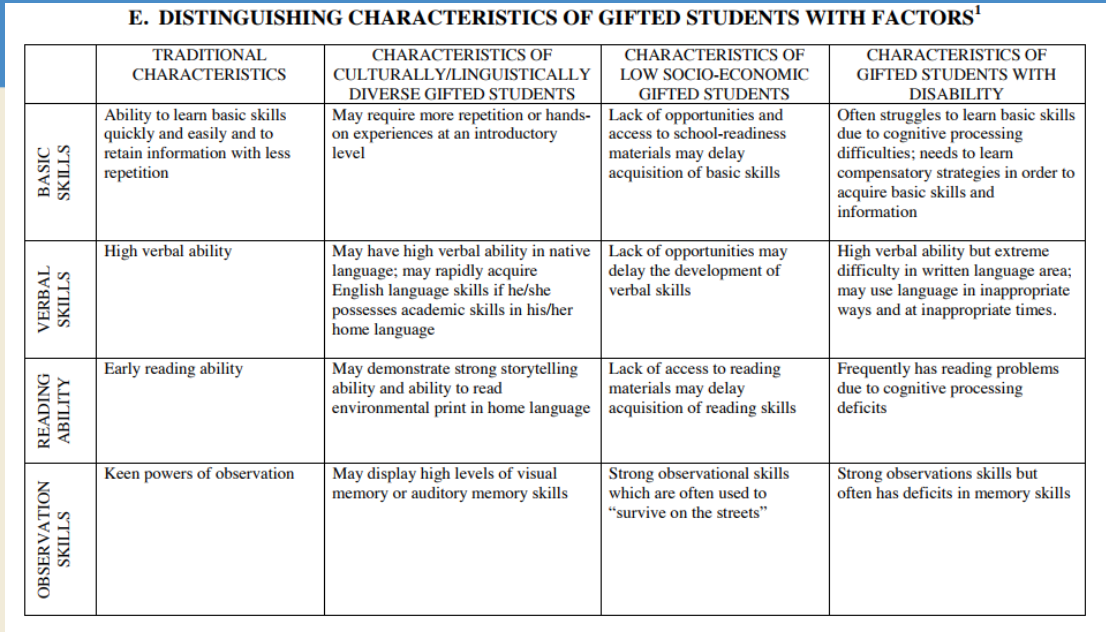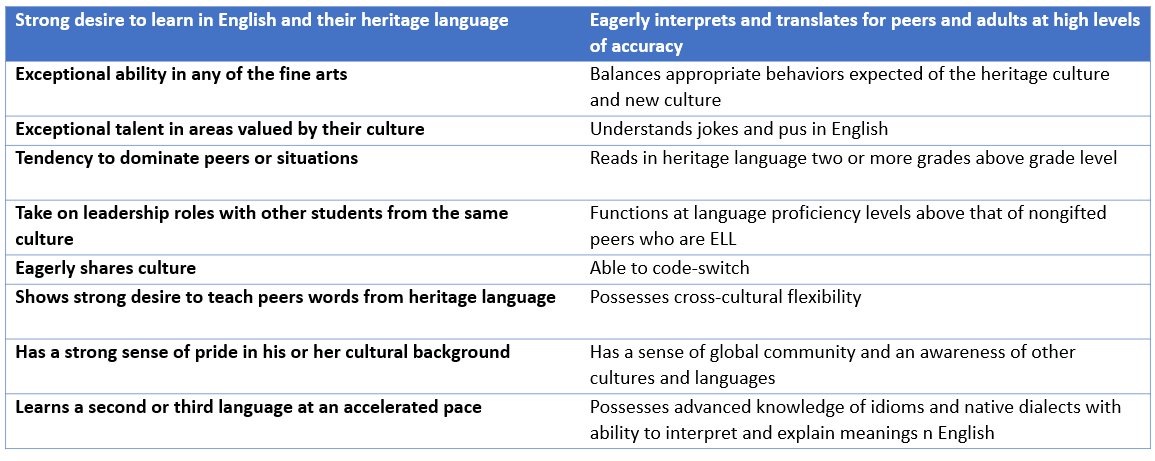2e and Underrepresented Populations
It is important to emphasize again that not everyone recognizes giftedness in students who do not fit the traditional myth of the well-behaved "A" student. Historically underserved students--students in poverty, of color, with disabilities, and whose first language is not English, are underrepresented in gifted education. In addition, students of color are over-represented in special education. Add in a disability along with being in a marginalized population and we can have this situation:
Students with disabilities are at a higher risk for school discipline than other students, with African American/Black and Latino(a) students with disabilities at an even higher risk. Although there is limited research focusing on the experiences of students of color with disabilities, a 2015 U.S. Commission on Civil Rights report showed that black students with disabilities are almost four times more likely to have multiple suspensions and are twice as likely to be expelled compared to white students with disabilities (Laird, 2019). These exclusionary practices take time away from the classroom which can lead to students with disabilities missing important instructional time, repeating a grade, and/or dropping out of school (Laird, 2019; Southern Disability Law Center, 2014) Credit: Developing Culturally Responsive Resources to Support Advocacy for People with Intellectual and Developmental Disabilities.
If we are more aware of what to look for in all students, we can become better at appropriate identification. Take a few minutes to look over this often-used table developed by E. Nielsen in Albuquerque Public Schools Gifted Task Force (1999). This table is also in the shared Google folder.

Just like every person, all populations also bring unique strengths to their learning environments. We must be careful not to only look at supposed deficits. For example, English language learners aren't yet proficient in English, but look at the wealth of strengths they bring to your school!

Adapted from Aguirre and Hernandez(1999) and Winebrenner and
Brulles (2008)
The more we understand these complex students the better we can become at noticing their strengths, their needs and how to program for them to ensure they are making growth in their area(s) of strength. While focused on gifted and marginalized, not specifically 2e, THE G WORD has some excellent videos that "reveals the economic, cultural, and gender diversity of our nation’s gifted and talented population at every stage of life, highlighting their educational challenges, social isolation, deep emotional sensitivities, and complex, neurodiverse brains" (The G Word). Take a moment to glance at it and see if you would like to bookmark it for future use.
For a Deeper Dive (optional)
We need to consider the assessments we use to achieve equity in gifted education.
Adams 12 has kindly offered to share their document "Profiles of the Gifted & Talented – Matrix" which contrasts verbal, non-verbal, quantitative, creative and cultural characteristics of gifted students who are English language learners, in poverty or twice-exceptional. They also suggest some possible instruments to collect data for each population. Below is a sample of the document. To access and download the full document, click HERE.
